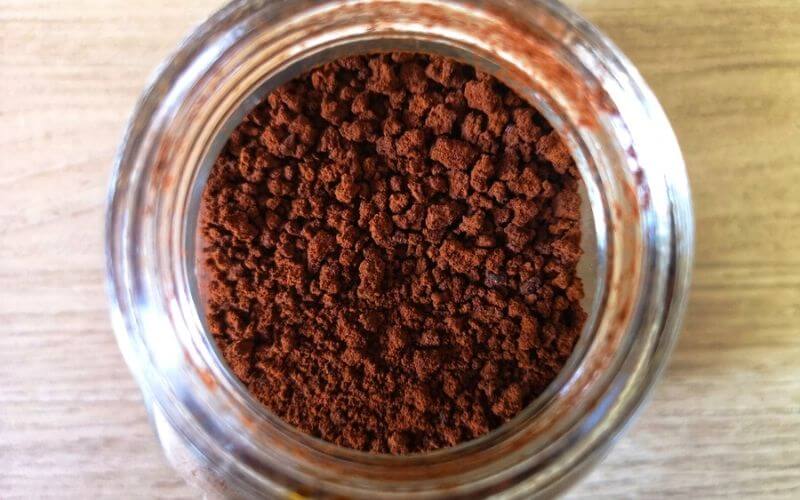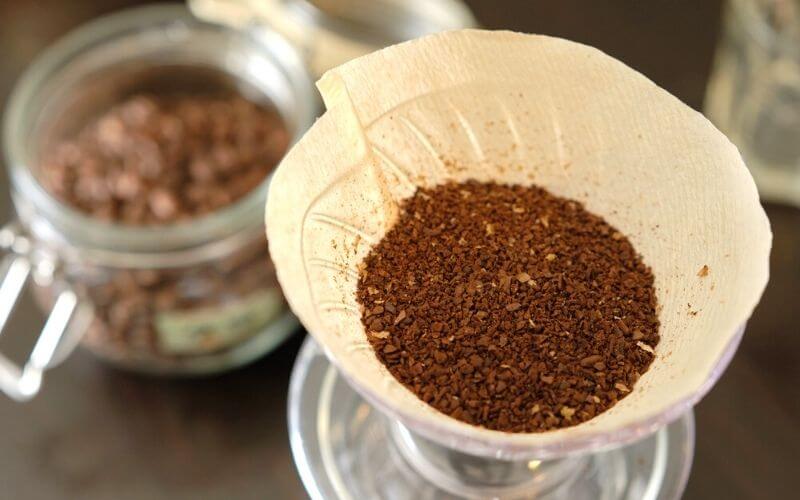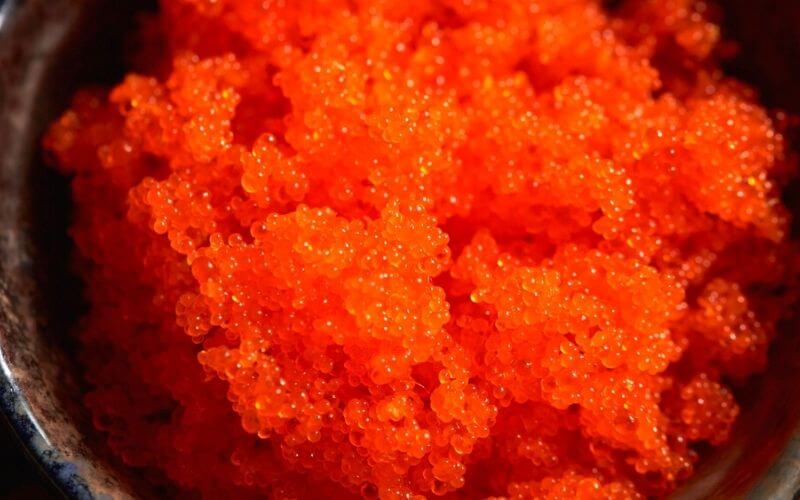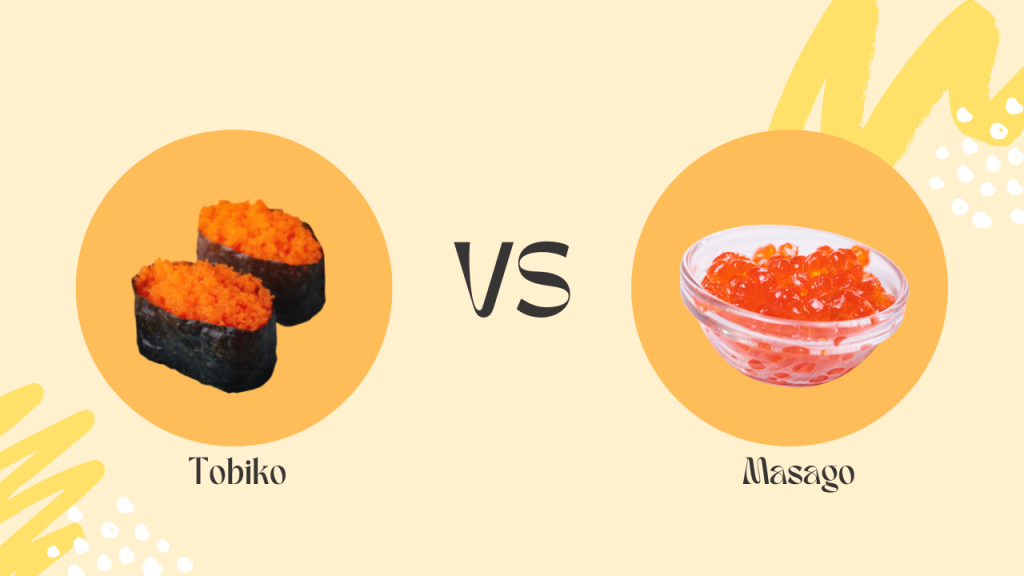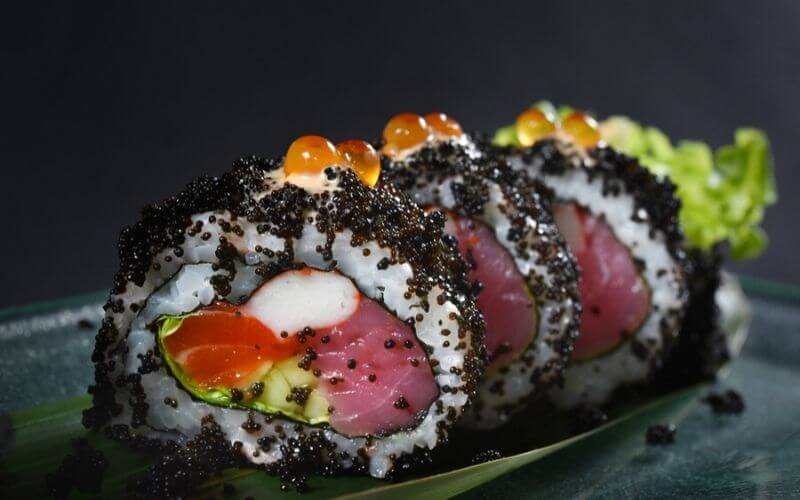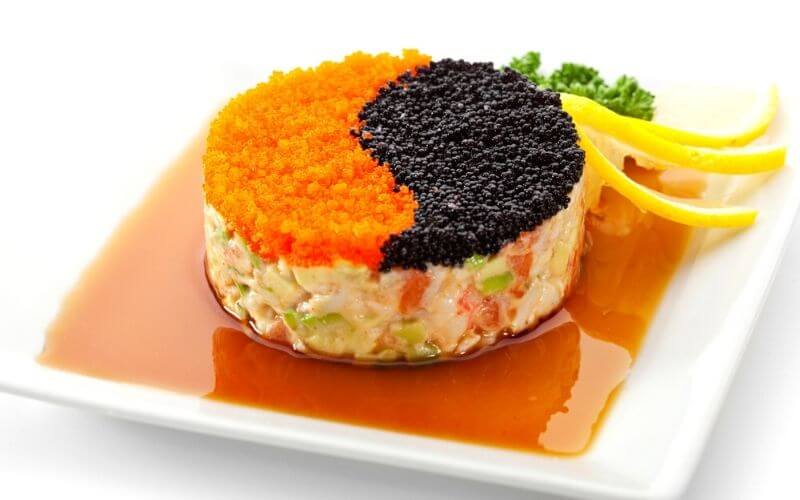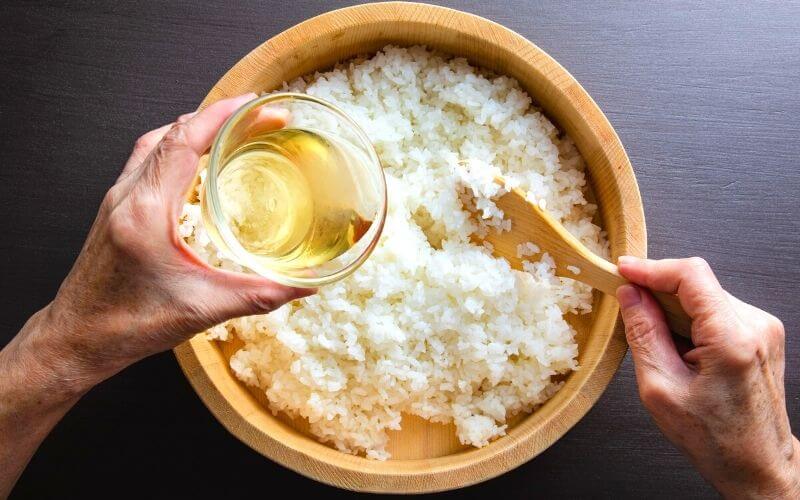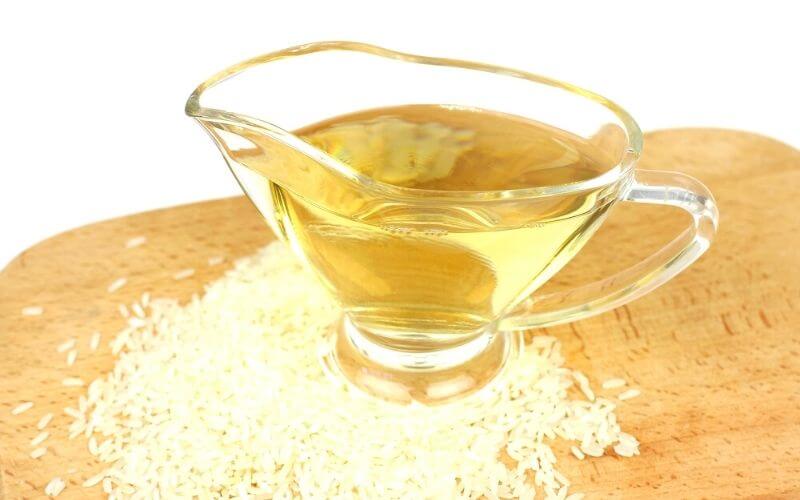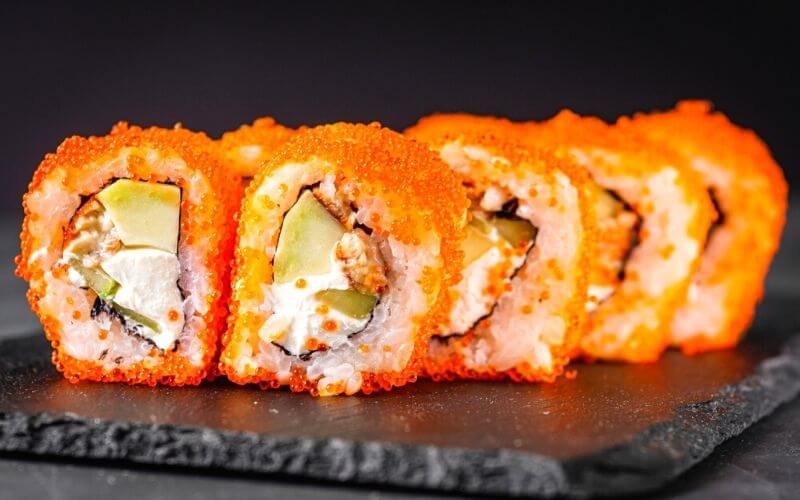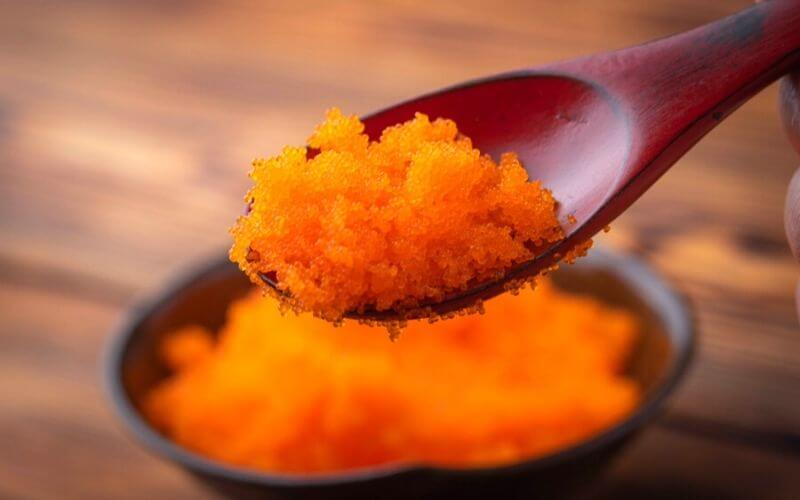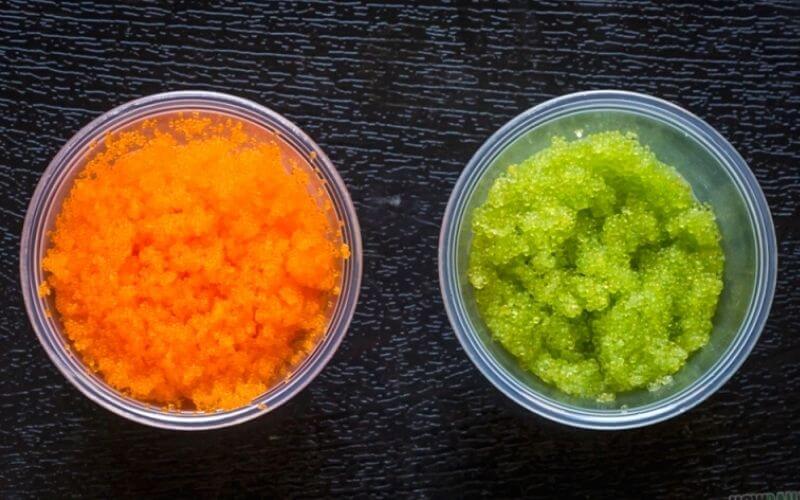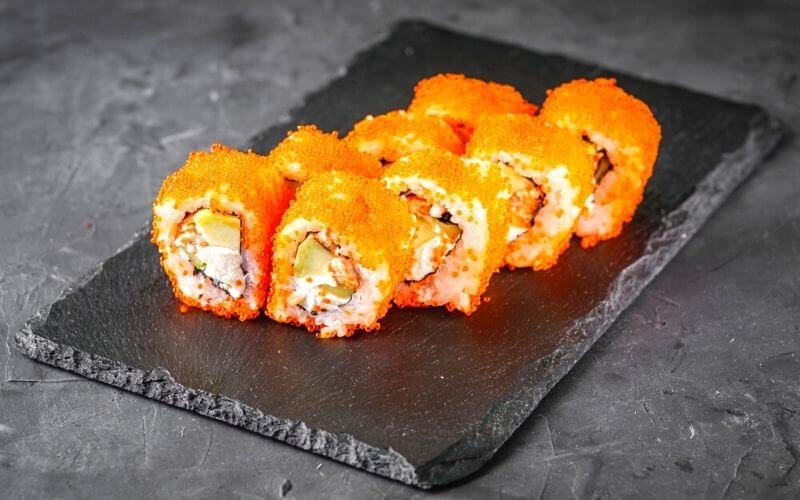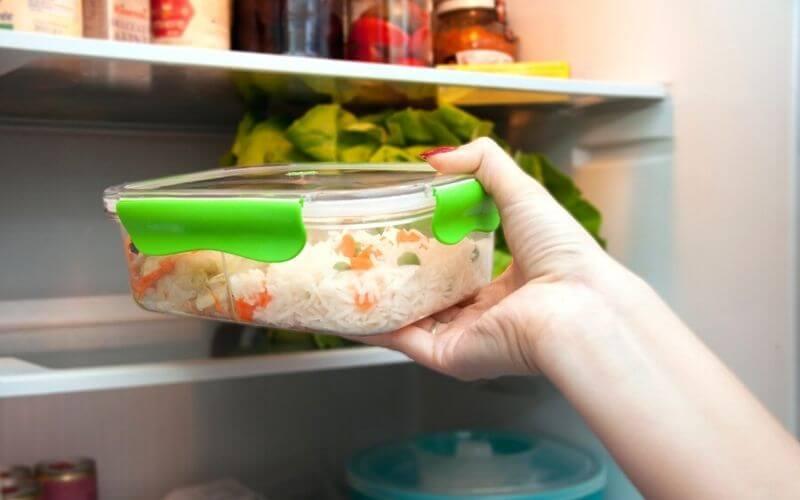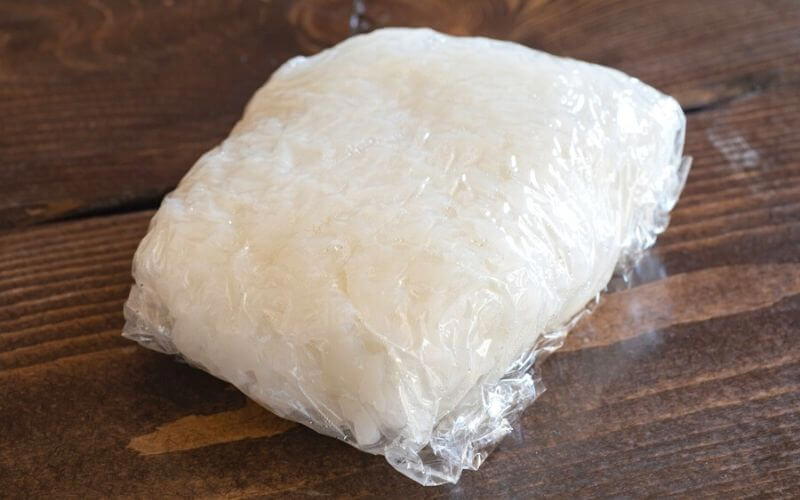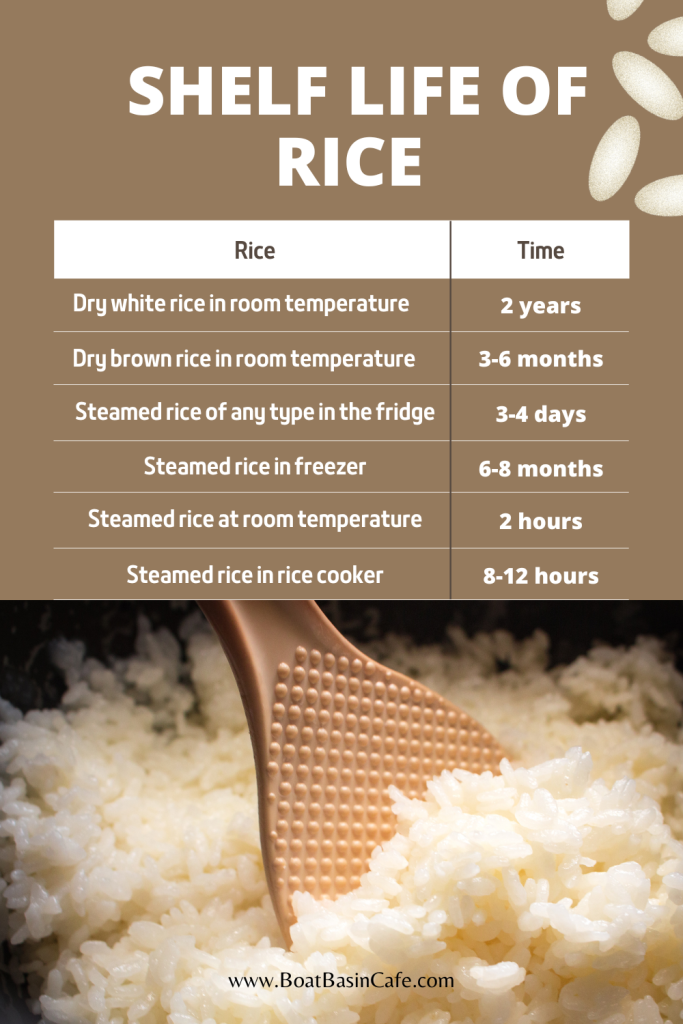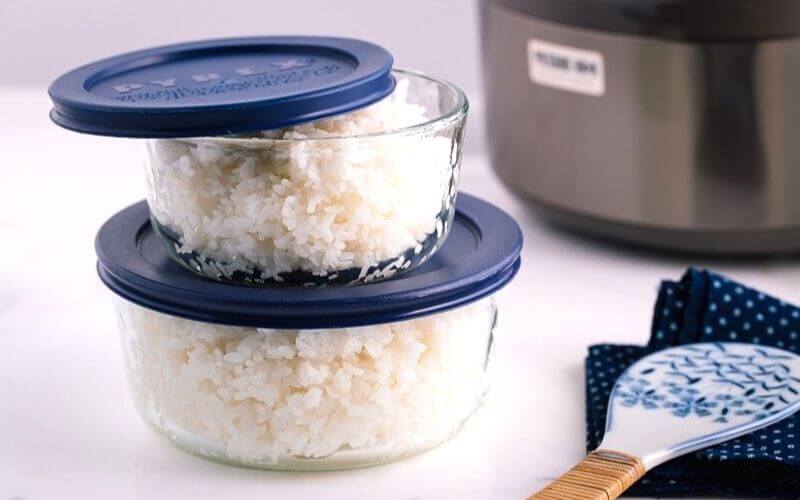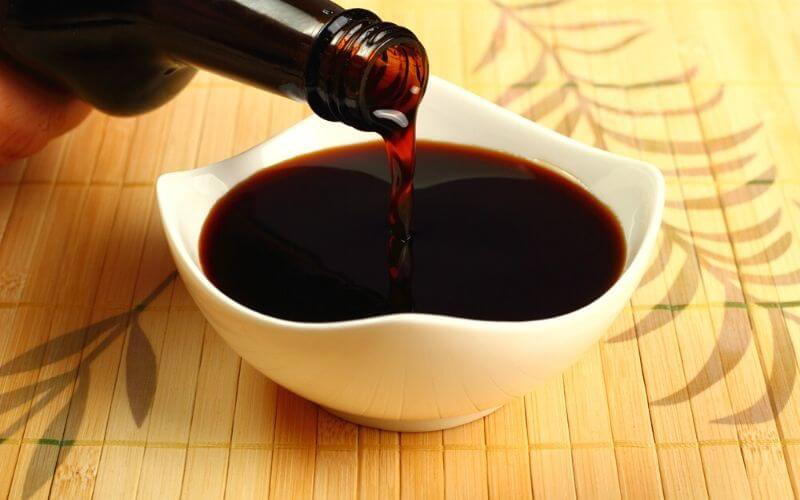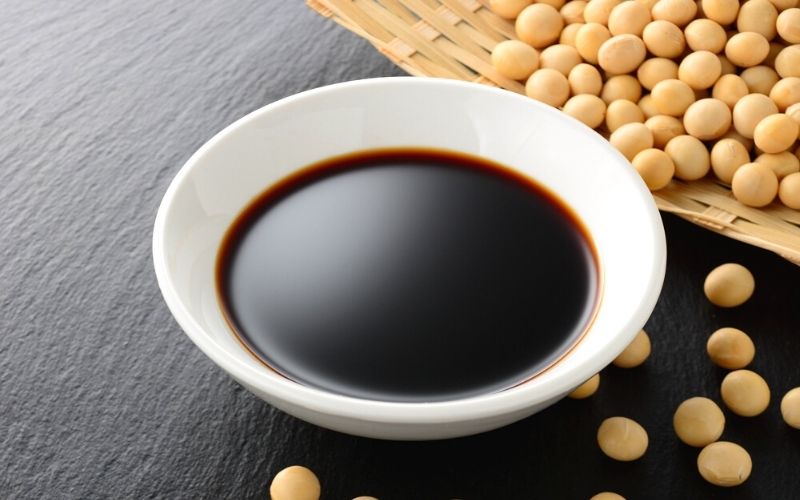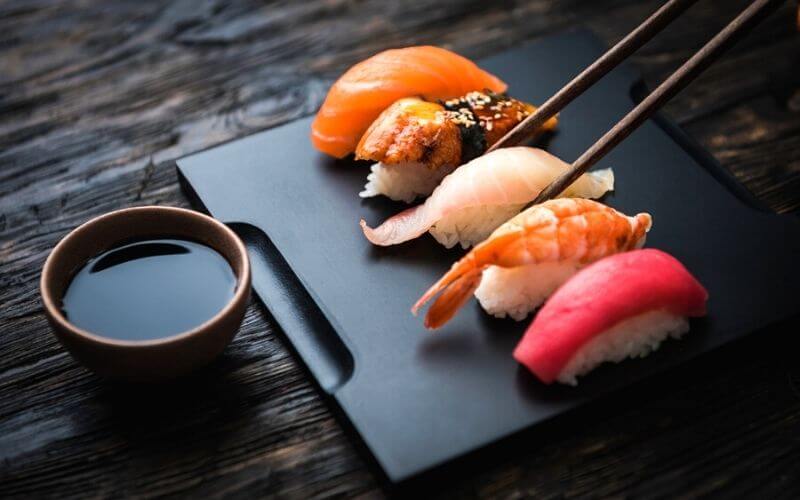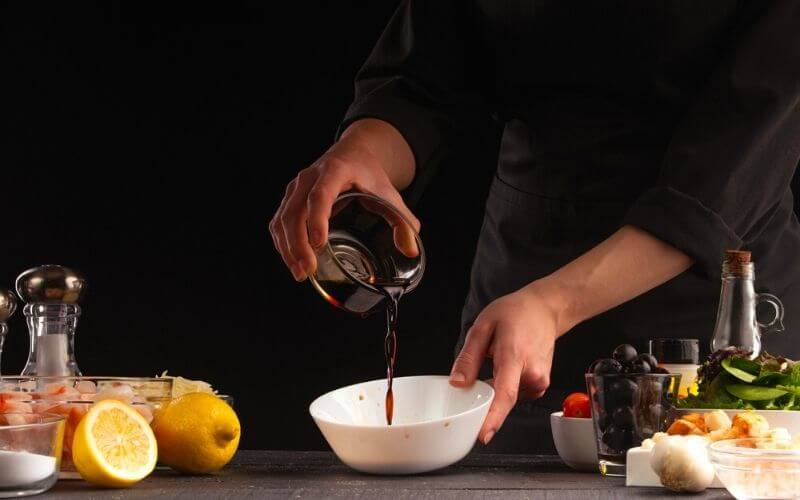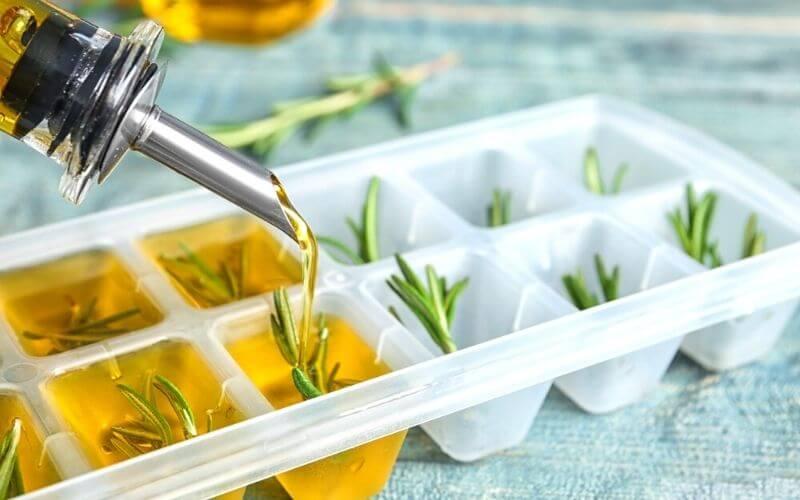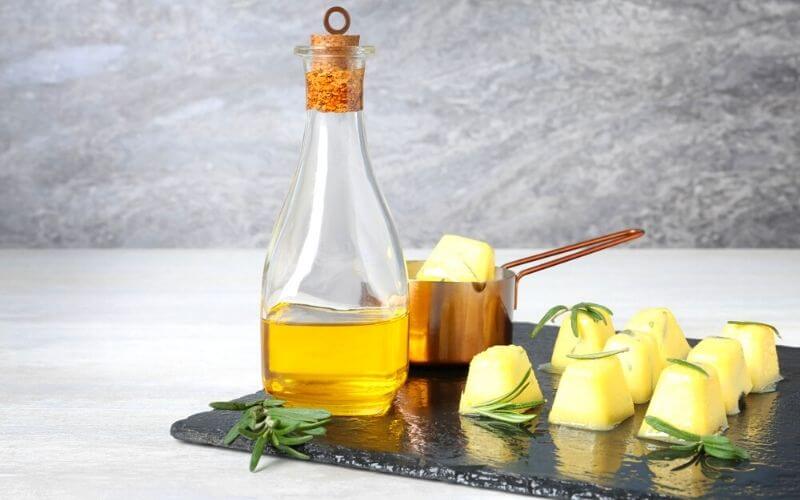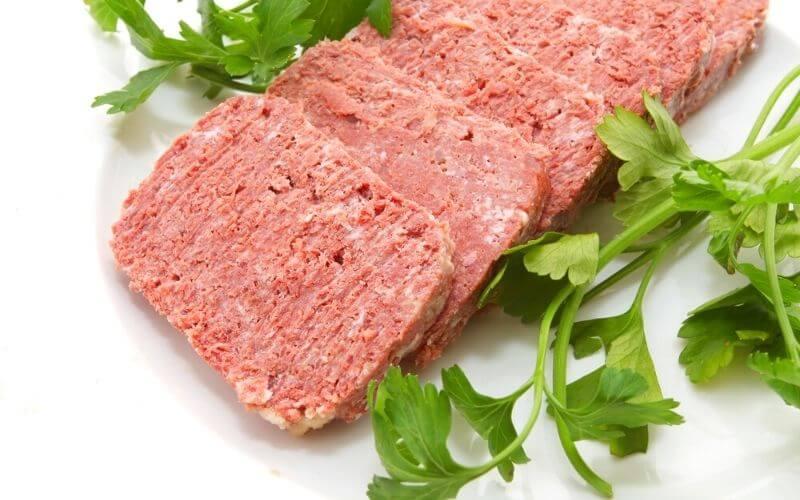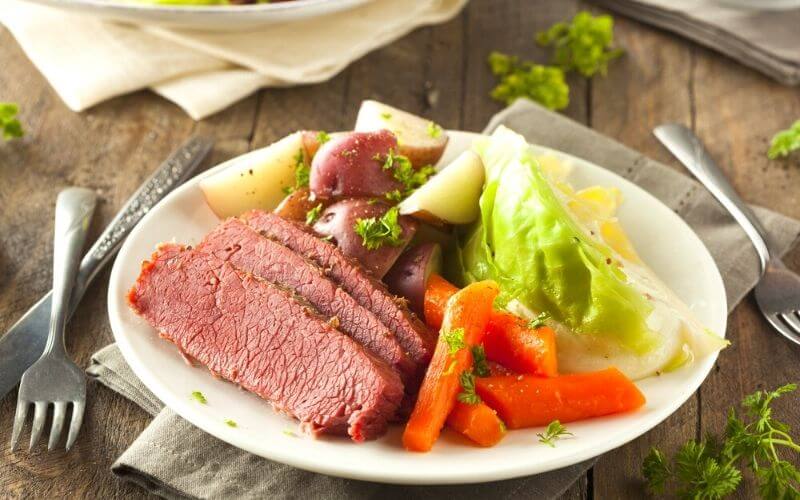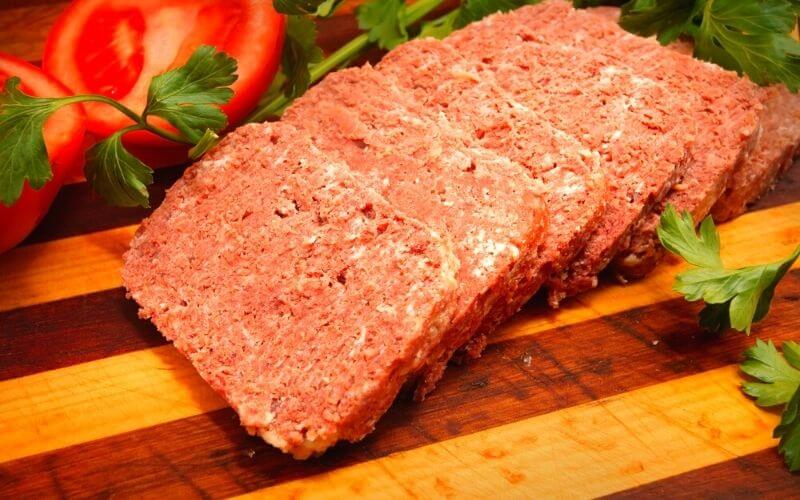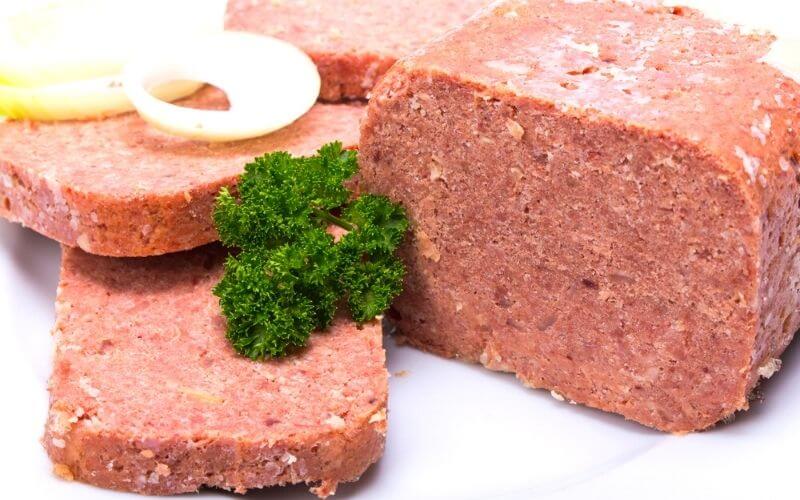Learn how to tell if shrimp is cooked by looking at its color and size and how to prevent overcooking them so that they don’t become rubbery and less juicy.
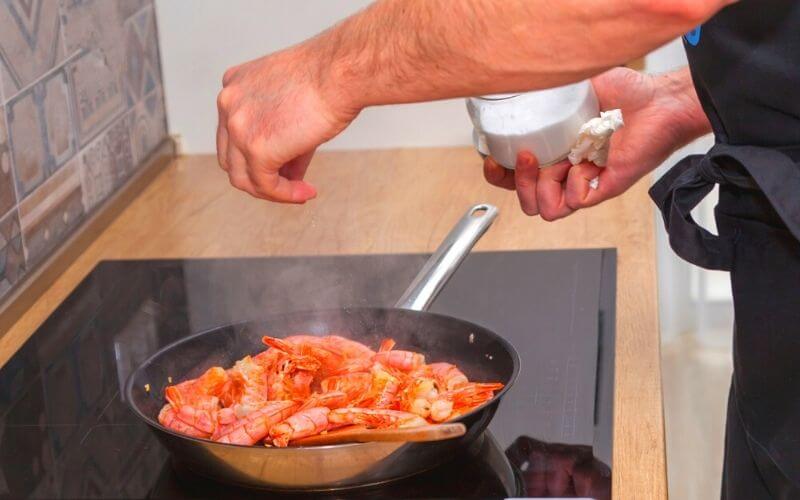
Shrimp is a type of seafood with shells belonging to the crustacean family and it’s the most common seafood that the US imports.
These can vary in size and the larger ones are called prawns although they don’t belong to the same family.
You can make various dishes with shrimp like salads, pasta, and chowder.
They are also great to have on their own sautéed in olive oil.
However, it’s a bit tricky to cook shrimp as the difference between undercooked, cooked, and overcooked shrimp is just a matter of minutes.
In this post, we will cover all you need to know about what does cooked shrimp look like.
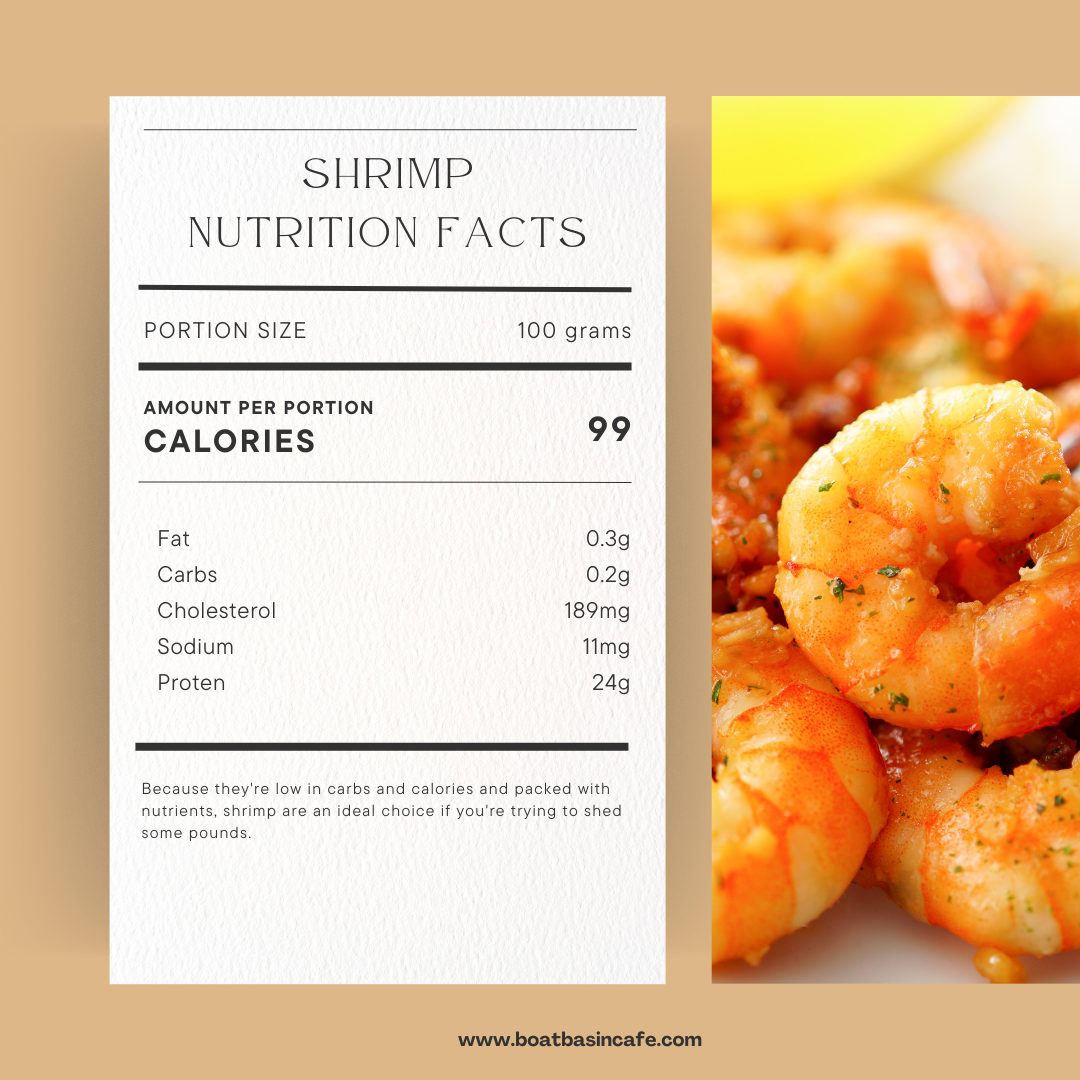
How To Know If Shrimp Is Cooked
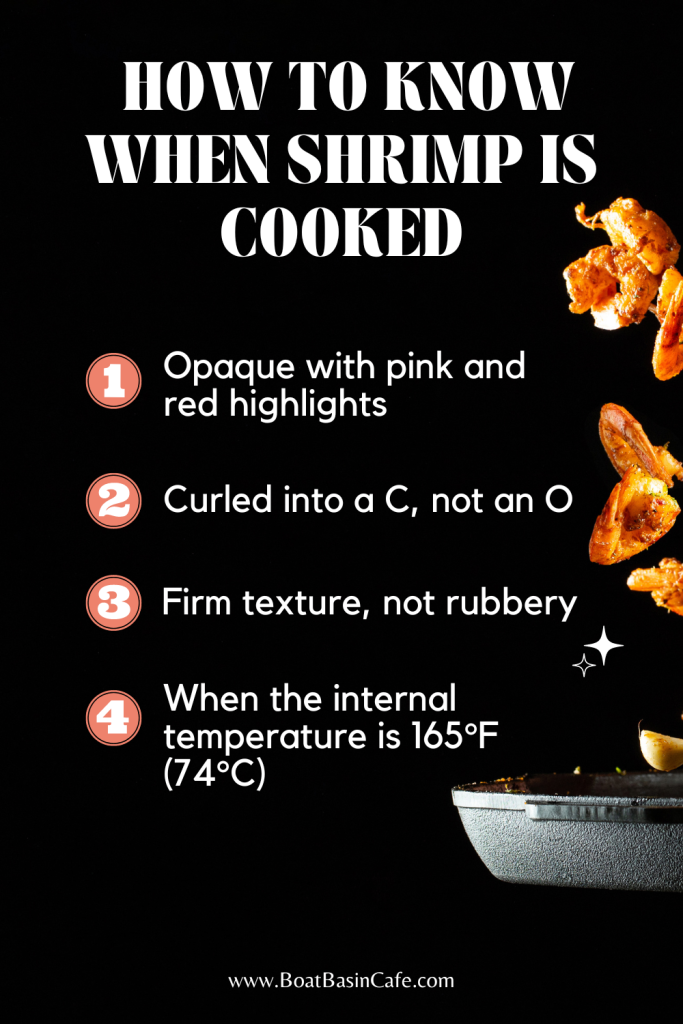
There are several ways to tell when shrimp is cooked thoroughly.
If you’re an expert, then you already know what color is cooked shrimp.
However, for those new to cooking shrimp, here are the best ways to know when shrimp is cooked.
Color
Translucent shrimp with grey shells are raw shrimp, meaning that light penetrates through the flesh somewhat but not all the way through.
Cooked shrimp still translucent means you need to cook it some more before it turns pearly white with tinges of pink and red.
Opaque white shrimp is the correct sign when you know you have properly cooked shrimp.
When shrimp is done on one side, you can see hints of pink and red highlights on the exterior and the tail.
Take note of the degree of whiteness in the flesh.
Just when it starts to turn white is about the right time when you know that the shrimp is done.
If you wait for the white to be a more solid white then you will have overcooked shrimp in your hands.
Then flip to cook the other side but how would you know that the inside has turned white?
The best way to tell when the shrimp is done is to keep an eye on the crevice on the back of the shrimp where it was deveined.
The shrimp is thickest at the opposite end of the tail, so make sure to focus on that area.
You want to wait until the flesh at the base of that crevice turns from translucent to opaque to know you have perfectly cooked shrimp.
Temperature
If you’re not confident yet about how to tell if prawns are cooked, the easiest way is to check the temperature of the skillet or the internal temperature of the shrimp.
When your instant thermometer shows a reading of 165°F (74°C), that’s when you know you have prepared shrimp properly.
It’s not safe to eat raw shrimp unless they are sushi-grade.
Speaking of temperature, you should know how to cook frozen shrimp the right way to avoid rubbery texture and also to ensure that there’s no chance of getting food poisoning.
Shape
Shrimp shrinks when they’re cooked as their muscles contract and the shrimp curl as a result.
Some chefs say you’ll know they’re done when they form a C shape, but if the opaque color shrimp keep forming an o shape, they’re overcooked.
So C is for cooked and O is for overcooked.
That’s a simple way to tell if shrimp is cooked!
However, what if you have the shrimps on skewers?
They won’t be able to curl if barbecued using skewers.
In this case, it’s better to go back to the lesson we have learned about what color is shrimp when cooked – opaque white.
How To Tell When Shrimp is Done: Factors That Affect The Cooking Time
Size
It’s a no-brainer that cooking shrimp of smaller size will take less time than the large ones.
The trick is to pay attention when you’re cooking the smaller shrimp so you can adjust the heat to ensure that they don’t get overcooked.
Shells On Or Off
If you serve seasoned or boiled shrimp, it’s recommended to cook them with the shells on to pack in the flavor and moisture.
Of course, the cooking time will increase with the shells on as you will need five full minutes to make sure they are cooked thoroughly.
It’s better to remove the shell and cook or boil them if you’re going to add shrimp to pasta or rice dish as otherwise, it will take a lot of work to remove the shells at the table.
Without the shells, shrimps take two to three minutes to cook.
Heat
Cooking shrimp over a low and slow flame will take longer than cooking them over high heat.
Shrimp is something that should not be slow-cooked, however.
It’s not like beef or mutton that will have a fall-off-the-bone effect when cooked over low heat.
Shrimp turns out best if you pull a fast one over high heat.
Cooking Process
| Sauteing with veggies | 1-2 minutes |
| Sauteing for adding to salad or pasta | 1-1.5 minutes |
| Grilling | 2 minutes for each side |
The cooking method of shrimp affects the time it takes to cook shrimp.
The shrimp should be cooked in 1 to 2 minutes if you’re stir-frying them with veggies; however, the vegetables should be very hot before adding the shrimp.
If you’re planning to add the shrimp to a salad or pasta, it should be sautéed over medium-high heat for one to one and a half minutes before being removed from the fire to allow it to finish cooking.
For boiling shrimp, bring the water to a boil before adding the shrimp if you’re cooking them for a dish like a shrimp cocktail.
After adding the shrimp, keep an eye on the pot and turn off the heat just as it begins to boil again.
Remove the shrimp as soon as they become pink and immediately submerge them in freezing water.
If you’re grilling shrimp, it takes about 2 minutes to cook shrimp on each side.
Skewer them separately from other meats and veggies.
In this manner, since the cooking durations for each item probably vary greatly, you also don’t run the risk of overcooking them.
Frozen Or Fresh
Last but not least, whether you’re cooking frozen or fresh shrimp will impact the total cooking time.
Frozen shrimp tend to cook faster than thawed or fresh shrimp.
So time your cooking well and make sure you’re cooking frozen shrimp for a shorter time.
What To Do Before You Cook Shrimp
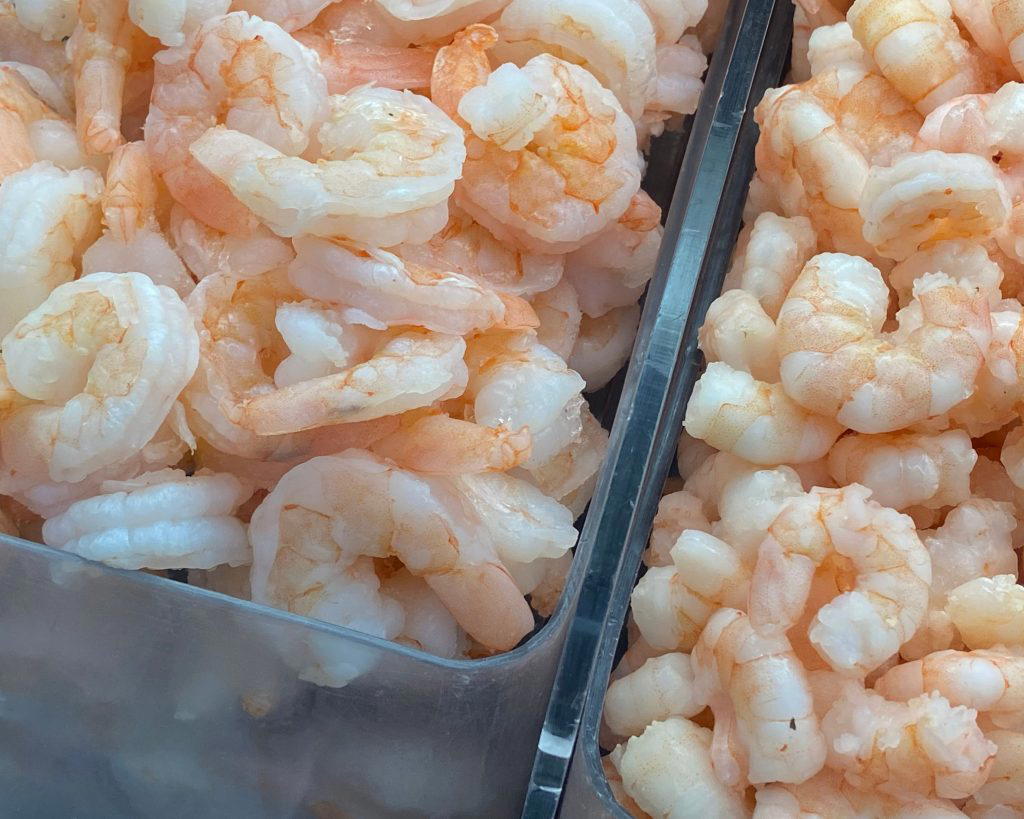
For the best tasting shrimp, start with buying the right shrimp.
You can buy raw shrimp from fishmongers, at the seafood counter, or frozen shrimp from supermarkets.
The shrimp size will usually be mentioned on the package – small, medium, large, extra large, or jumbo.
If you’re a busy person, buying deshelled and deveined shrimp will save you much time and you can have your shrimp meal sooner than later.
But if you’re someone like me who wants to savor every bite of grilled shrimp and treat friends, it’s better to buy shrimp with shells.
This will prevent the shrimp from drying out and will keep the mildly sweet flavor of this beloved crustacean intact.
Whether you sauté shrimp in a pan, broil it on a skewer, or add it to a soup, it cooks rapidly.
It doesn’t take long for raw shrimp to go from gray to pink and get cooked properly.
If you have frozen shrimp and you’re suddenly craving a shrimp meal, don’t worry.
To thaw frozen shrimp, put it in a bowl and run a cold water tap over it until it has defrosted.
Or, put the frozen shrimp straight into the pan to cook.
Or, if you want to cook the shrimp for guests, you can put frozen shrimp in the refrigerator overnight to thaw.
Tips To Cook The Perfect Shrimp
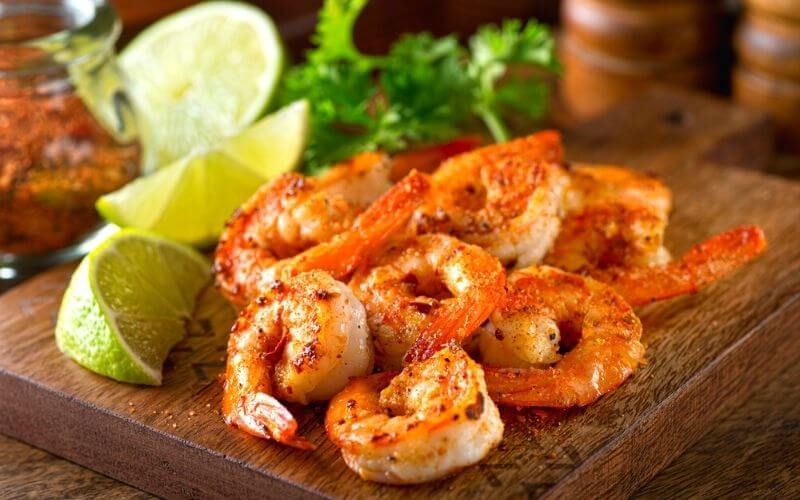
- If you want to cook the perfect shrimp, make sure to give them each some breathing room by laying them in a single layer in a large pot.
This allows for optimal contact with the hot frying surface, giving the shrimp a deep sear and even cooking throughout.
- If you’re concerned that you overdid the shrimp, you can stop the shrimp from cooking by taking them out of the pan right away.
Even if the heat is turned off they’ll still cook a little bit.
But if you leave them in the pan, the heat will make them dry out.
- Don’t grill or cook shrimp beyond 5 minutes.
- Always use the same size of shrimp as a mixed size of medium and jumbo size shrimps won’t cook uniformly and you will have some shrimps undercooked while others are overcooked.
- Frozen shrimp can become rubbery faster than defrosted or raw shrimp.
Therefore, make sure to cook frozen shrimp for a shorter time.
- Avoid defrosting frozen shrimp in the microwave oven as this will make them rubbery.
How To Tell If Shrimp Is Bad
Cooking the perfect shrimp will mean zilch if the shrimp was bad in the first place.
How to tell if the shrimp you’re buying is bad?
Fresh raw shrimp should give off a slight smell of the ocean, not a strong fishy smell.
Moreover, a translucent and glossy look means the shrimp are fresh and good to buy.
If shrimp looks cloudy or feels slimy to the touch, drop them immediately!
That covers fresh shrimp.
What about cooked shrimp?
How do you know it has gone bad?
Do the sniff test!
If you smell anything unusual, then it’s off.
Or, if it doesn’t have a pale pink fresh look on it, it’s time to toss it.
How To Store Shrimp
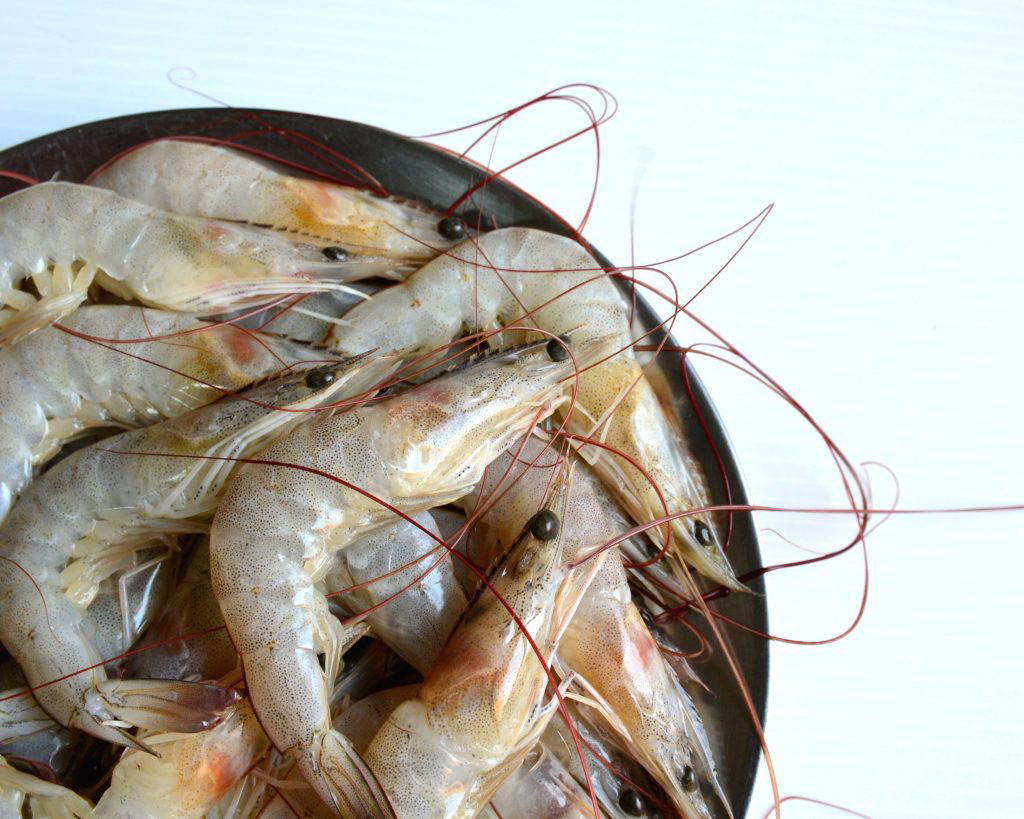
It’s best to store fresh shrimp in the refrigerator as soon as you buy it.
This will stay good for two days in the fridge provided the constant temperature of the fridge is 40°F (4.4°C).
If you want to make it last longer, you should freeze shrimp.
Before putting it in the freezer, wrap the shrimp in plastic wrap or aluminum foil and place it in a freezer bag or airtight container.
What if you have leftover shrimp you cooked last night?
Well, you should bring them down to room temperature and refrigerate it in an airtight container.
This will last for up to four days in the fridge.
Can You Fix Overcooked Shrimp?
Unfortunately, no!
Once you have rubbery shrimp, there’s no way back.
The worst thing you can do is keep it on the flame and hope that it will taste good again.
The best thing under the circumstances would be to add it to a creamy pasta dish instead of having them on their own.
What Happens If You Eat Undercooked Shrimp?
You may get food poisoning if you eat shrimp that has been partially cooked.
Although in China and Japan, eating raw shrimp is okay, it’s not recommended as there can be Vibrio bacteria present in raw or live shrimp.
Some variants of this bacteria can be really harmful for human health.
FAQs
Are Pink Shrimp Cooked?
Yes, when the exterior parts of the shrimp turn pink, it means it’s cooked.
How Do You Know If Shrimp Is Undercooked?
Undercooked shrimp will appear gray and translucent.
What Does Fully Cooked Shrimp Look Like?
When shrimp is fully cooked, it looks white and opaque with touches of red, orange, and pink on the exterior and on the tail.
Can You Eat Undercooked Shrimp?
Only if it’s sushi-grade shrimp can you eat undercooked or raw shrimp.
Otherwise, you may fall sick due to the bacteria present in undercooked shrimp.
How Long Does It Take Shrimp To Cook?
It takes 2 to 5 minutes for the shrimp to cook.


